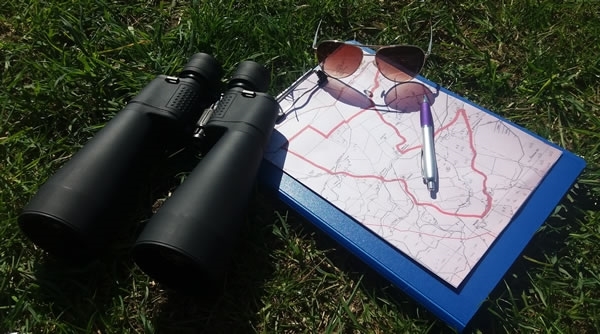 By Marlies Nicolai, GWCT Auchnerran Research Assistant
By Marlies Nicolai, GWCT Auchnerran Research Assistant
Buzzards are a very common raptor which can be seen soring through the skies of Scotland over agricultural land and forest plantations. They have a ‘V’ shaped gliding flight pattern, a broad rounded wing span and a fan shaped tail. This distinctive shadow can often be seen cast over fields as they search for prey.
For a long time now, their population has been increasing and there are currently around 15,000-20,000 breeding pairs in Scotland.
The increase in numbers is due to a combination of reduced illegal killing in the uplands and lowlands, an increase in food availability, especially rabbits which are the buzzards key prey species and an increase in nesting habitats in the form of new forest plantations, selective felling practices and forested field edges.
The monitoring of the buzzard population on the GWCT Scottish Demonstration Farm at Auchnerran, began in 2015. Each month a general raptor count along a set transect route is carried out in order to help estimate population numbers, identify breeding/nesting sites and to track fluctuations in numbers through seasons and subsequent years to follow. It is important to identify how buzzard populations are faring in this area as they are likely to be a key component of the food web.

During 2016 the greatest number of buzzards observed during a complete transect was ten individuals which was observed in April. It is expected that not all members of the local farm population will be seen on a single transect, therefore ten individuals will represent the minimum population number.
For a farm which is 417ha in size, this number is quite high. We expect that a large number of individuals inhabit the farm due to the plentiful supply of rabbits which have created large rabbit warrens throughout the farm.
 Not only does the farm and adjoining hill edge and upland heathland create pretty good living conditions for buzzards but also other raptors including, golden eagle, goshawk, sparrowhawk, kestrel, barn owl, tawny owl, peregrine, merlin and red kites.
Not only does the farm and adjoining hill edge and upland heathland create pretty good living conditions for buzzards but also other raptors including, golden eagle, goshawk, sparrowhawk, kestrel, barn owl, tawny owl, peregrine, merlin and red kites.
Red kites are the second most numerous raptor to be observed on the farm with a total of five individuals being observed on a single transect route. At present both the buzzards and red kites are often seen together foraging over the recently cut stubble fields to the east of the farm.
The barn owl is also frequently sighted, however, so far never during a raptor transect. This species is often sighted flying in and out of the numerous derelict buildings which are located on the farm. At the beginning of the year a nesting site was discovered at the north of the farm in an old farm house.
 Once nesting sites have been identified it is important that human disturbance is reduced which can be achieved by putting up awareness signage, especially along main hill walking routes, to encourage people not to enter the derelict building.
Once nesting sites have been identified it is important that human disturbance is reduced which can be achieved by putting up awareness signage, especially along main hill walking routes, to encourage people not to enter the derelict building.
The structure is also relatively unsafe to enter therefore, danger and warning signs are now present at the entrance of the building which further prevents people entering the building and disturbing the owls.
It is evident that the farm supports a variety of raptors, however exact numbers still need to be established. It is hoped that further observations and monitoring in the future will help us accurately map populations and their fluctuations.